COCHITI LAKE, N.M. – Is a concrete canoe an oxymoron or actual mode of transportation?
Civil engineering students answered the question at the 44th annual American Society of Civil Engineers (ASCE) Rocky Mountain Regional Conference, hosted by the University of New Mexico. Eleven of the 14 schools participating in the conference demonstrated to what degree they could engineer concrete to race across the water of Cochiti Lake, April 11, 2015.
Each school’s team, composed of five men and five women, designed and built their canoe out of concrete in accordance with the competition rules regulating size, weight, and allowable materials. They earned points based on how well their craft performed.
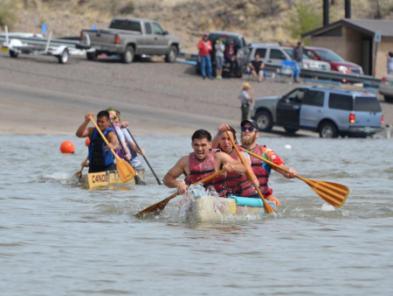
Before racing could begin, the canoes had to be tested to ensure that they did indeed float. Once racing began, there were three categories of races: a 600-meter endurance race; men’s and women’s 200 meter sprints; and a 400 meter co-ed race. Each race was segmented, with four teams in each heat and each team racing for the best time.
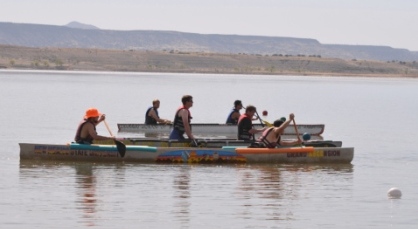
All participants were required to wear life jackets for safety and many wore wetsuits as Cochiti Lake’s water was a cool 59F. Some of the canoes flew across the lake, others were not so buoyant; one canoe made it to the start line where it then went under.
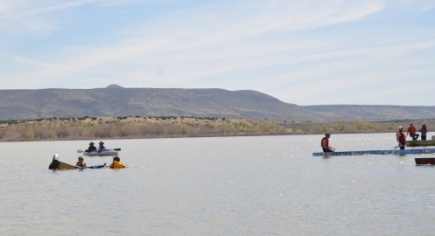
Another team’s canoe went under just shy of the finish line. However, the team floated their canoe the remaining distance to finish the race.
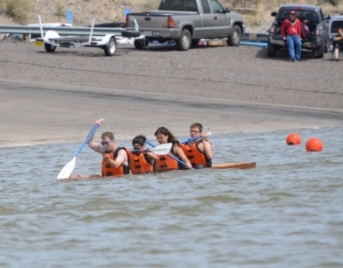
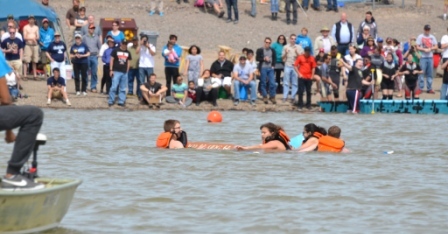
New Mexico State University, South Dakota School of Mining and Technology and Utah State placed first, second and third, respectively. Members of the NMSU team were awarded with a $9,000 scholarship.
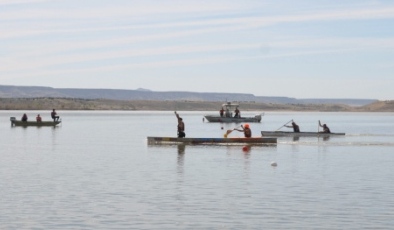
The competition aims to provide civil engineering students an opportunity to gain hands-on, practical experience and leadership skills by working with concrete mix designs and project management.
ASCE Student Organizations have been involved in constructing and racing concrete canoes on the local and conference level since the early 1970’s. The first national concrete canoe competition occurred in 1988.
Because each school takes turns hosting the event, the University of New Mexico won’t host it again for another 14 years.